Are you researching FieldTech, Salesforce Field Service, Service Titan, or Oracle as an option for field services software? Whether you’re just beginning research about scheduling software, or looking for a change, this article’s for you.
It’s no secret that in large part the success of your contracting business is based on accuracy, from bidding and job costing, to capacity planning and reporting.
For both for Field Services and Construction, it’s essential to have a handle on all the numbers to ensure profitability and customer satisfaction. If you don’t already use an ERP software to keep your operations in line, or it’s a slice of business you’re looking to improve, having the right applications in place can make a world of difference. What function does a Construction ERP software or Field Services ERP serve?
[caption id="attachment_5038" align="alignleft" width="400"]
 It might be time to let technology help you scale your contracting business for the 21st century. ERP solutions from Zoho might be the answer.
It might be time to let technology help you scale your contracting business for the 21st century. ERP solutions from Zoho might be the answer.[/caption]
Start with the Right Steps
Stop doing back-of-the-napkin estimates that sometimes happen in your business, and start getting a look at the true data you need. Put losses in productivity and profit behind you.
Zoho ERP solutions can be the keystone to simply and successfully capturing the details of your contracting for field services business. And we’ll show you the best ways to utilize data once the Zoho implementation for your teams are in place. We’re going to give you all the details about what it means to work with ZBrains, including our process – the heart of what keeps us and you – running smoothly. Let’s take a closer look at the ‘what,’ ‘why,’ and ‘how’ of the importance of ERP software, including field service scheduling software.
Ready to Revolutionize Construction? How Does ERP Help?
Fundamentally, an ERP like a field services software is meant to help you ensure operations are running smoothly, but that’s just one aspect. This organizational efficiency coupled with the ability to keep your fingers on the pulse of your most important KPI’s is where the true power of ERP software is recognized.
Take a moment for this quick exercise, and ask yourself: “How would my business change if I could sync inventory, order management and financial data? What about the ability to centralize my operations including everything from insight into customers, quotes, sales orders and invoices, to product inventory, work orders and process automation?”
Construction, field services, and contracting in general require precision. Without it, your service quality suffers, workmanship can fail, and inevitably your customers and profits suffer. Do you have all of your KPI’s accounted for and are you able to measure them and benefit from the results? ERP software is the key to organizing process, people, and data you need to make sure you can.
Why does Business Process Management matter?
Before you read further, take another moment and imagine having:
“a disciplined approach to identify, design, execute, document, measure, monitor, and control both automated and non-automated business processes to achieve consistent, targeted results” that are aligned with your strategic goals.
[caption id="attachment_5037" align="alignright" width="400"]
 ERP software helps your business integrate functions such as quoting, time tracking, equipment tracking, job costing, inventory management, and more.
ERP software helps your business integrate functions such as quoting, time tracking, equipment tracking, job costing, inventory management, and more.[/caption]
This consistency, when aligned with business goals, is how some of the most successful businesses you already know are getting great results. Does this idea intrigue and energize you? If so, keep reading.
Does good business processes actually solve problems?
Consider how the aspects of the definition above applies to common activities you do in your business like: quoting, time tracking, equipment tracking, job costing, inventory management, scheduling, invoice and expense tracking, commission tracking, and returns management. Do you currently have a way to achieve each of these points?
- Can you easily access data and share between teams and/or departments? Or is it siloed?
- Does it take more than one hand to count how many software systems you’re using?
- Is the handoff from one department or process to another seamless?
- Does information get lost in the shuffle or is never considered at a global level?
- Is is easy to see who’s working, where they are, and how effective they are in a given project?
You’re on the right path if implementing solutions for any of these problems is making sense for you. There are a lot of ways to achieve streamlined operations and processes, but let’s talk about some of the benefits first.
7 Benefits Of Standardized Processes for Field Services or Construction
Which of these 7 benefits could help you improve your business the most?
1) Increase Productivity
Imagine a solution that could give you access to your service team status and location immediately, or that would allow you to create a quote faster. Or what if resources spent less time with double-data entry? How could this affect your productivity factor?
2) Quality Control
Does your customer feedback say that some of your projects are perfect while others fall short? Standardization makes your business and project planning more straightforward. This includes scheduling, and ensuring you have the correct resources and materials for the job. Additionally, with this data you can streamline the training/onboarding process.
3) Easier Collaboration
A well-provisioned ERP allows for more meaningful collaboration across teams because it helps to remove siloed information. Transparency in your organization helps your teams identify best practices, remove redundancies, and share expertise across departments more easily.
4) Reduce Costs
Accurate job costing that’s visible from a centralized dashboard will help you identify areas of material and labor waste that might have previously gone unseen for ages. Employees can easily track time and materials on a a job, giving you direct insight into job and company profitability. This is just one facet of how an ERP helps reduce costs, now imagine data for equipment tracking, scheduling, inventory, and more all in one place.
5) Innovation & Adaptation
You don’t have to operate your business on gut feeling, but instead rely on instinct PLUS data together! Use your experience to plan your changes, implement them, and then use metrics you’ve captured to measure the results. When you have the data in hand, create incremental changes toward improvement! All of this is possible with the right contracting ERP or field services software.
6) Beat the Competition
When you are spending less time searching for data, managing individuals, and chasing processes, and more time working in your business, you actually gain productive time. With more productive time, you can focus on the innovations that move your business ahead of your competition!
7) Single Source of Truth
Speaking to many of the points above, standardized processes help in business operations beyond the basics. In order to scale comfortably, Zoho can help you tie everything together with a single source of truth. Solutions from Zoho take pride in security protocols for their softwares, but this translates to your business overall.
Now, if you’ve made it this far, you’re likely a serious candidate for Zoho’s field services ERP software. And maybe you’re also convinced that ZBrains is the certified Zoho Partner to assist in your implementation. Let’s keep the conversation going!
How does the ZBrains Business Process Analysis work for ERP and field service scheduling software solutions from Zoho?
Let’s talk about how an engagement with ZBrains begins – with a Business Process Analysis. We take all the reasoning and research described above, and apply the same principles to our own assessments. Here’s what it looks like:
This is a BPA with ZBrains
The BPA, or business process analysis, is integral to all ZBrains consulting projects. Just like any other planning effort, it ensures a successful implementation that fits with your business processes. It’s always our goal to begin solving your business problems by first fully understanding your current state.
Here’s what we do:
-
- We start by analyzing expectations and performance gaps in your business processes.
- Then, we examine your business from a wider industry perspective.
- Next, our consultants evaluate the opportunities for improvement.
- Finally, we decide which methods need to be introduced to positively impact the business.
This happens when we meet with your team and thoroughly review processes. It includes sitting with your sales, marketing, operations, and accounting representatives to make sure we understand all requirements and current systems. The goal here is to consolidate your business operations into a centralized platform with Zoho as the hub.
When the BPA is complete, you receive our expert recommendations on changes, augmentations or implementations needed to meet your goals. You get to see a timeline, the goals, and and outline of targets. You receive a strategy that can be executed with precision to create a successful business plan for the upcoming quarters and beyond.
This is how we work with Field Services, Construction, and other Contractors
A lot of our clients are in these industries, so much so that we built a software called FieldTech just for you and businesses like you! Our work specializes in small to medium businesses, just like yours. Here’s what a Business Process Analysis with ZBrains looks like for you:
We often work with a single champion, normally a President, VP, or another C-level representative of the company. We include members from teams across your organization in the intake sessions. Anyone who will be using the ERP software. We include your Sales, Estimating, and Marketing teams, Field Services or Construction Teams, Inventory Management representatives, and Finance. It’s important to include input from the people who will be using the system. The reason is to ensure that we get a global perspective of the business, and we find that this also encourages user adoption later on!
What information does ZBrains gather during a BPA?
During our sessions with each department or team representative, we collect a lot of detailed information about their processes. Discussions with your teams will often include the following:
Sales and Estimating
We ask about your sales process. Then, we look at how your quotes or estimates are created and shared. How are you handling new leads, and how is existing business addressed? How do you measure success? And finally, what are the important KPI’s here?
Field Teams
How are teams scheduled and dispatched? Do you consider factors like crew size, availability, proximity ,or skill set? How is time tracking addressed? Are field teams tracking their own inventory, and assets? What about work orders, scheduling, and routing?
Production
How do you procure goods? Are you purchasing or manufacturing parts? Do you have composite items and a need for CPQ? What is your current process for handling bill of materials, work orders, and routing? How are you handling time tracking? We also get into your potential needs for planning capacity, batch/lot tracking, and on-site maintenance, to name a few.
Inventory Management
We go into detail about your inventory management processes including current and desired states. Do you have multiple warehouses, mobile warehouses? How are you handling order fulfillment? What about installation or service components? Do you order the same components from multiple vendors depending on lead time, price, and other factors? Do you need to track reorder levels for items you keep in stock?
Finance
We’ll drill down to completely understand what information is required from your front office to back office. We include review of documents for customers, all the way through to which data is required in order to generate executive reports.
Other Integrations
During consultation, we’ll also ask about your current integrations to determine compatibility and to see if any new integrations could benefit your business processes. Some of the Zoho integrations commonly used by manufacturing and distribution organizations include:
-
-
- ShipStation,
- TaxJar,
- Avalara,
- QuickBooks (Online and Desktop),
- and Xero for example.
Budgeting and Timeline for Field Services and Construction ERP Software Implementation
[caption id="attachment_5039" align="alignright" width="400"]
 Major software implementation doesn’t have to be a six-figure proposition. Zoho is is less expensive to implement and has a lower total cost of ownership than many other solutions.
Major software implementation doesn’t have to be a six-figure proposition. Zoho is is less expensive to implement and has a lower total cost of ownership than many other solutions.[/caption]
Major software implementation for a large contractor’s business can be as high as a six-figure implementation cost, in addition to another five figures for the service costs. These incredibly robust enterprise tools are really powerful, but for a small or medium business like yours, they’re oftentimes out of reach. Projects like this can be extremely cost prohibitive. The solutions themselves are more often than not complete overkill in terms of what a small or medium sized business will need and utilize.
Why Zoho is a Solid Choice
- You deserve a solution that is also robust in functionality and nuanced for your business, because you do! For SMB’s like you, Zoho is a great solution.
- This solution is less expensive to implement and has a lower total cost of ownership.
- Customization using rapid development platforms like Zoho Creator means the applications are built to suit your business.
- Zoho is accessible. It is built and designed with the SMB in mind. Custom fields and new reports couldn’t be simpler. Drag and drop functions make it easy to use and customize for yourself, all with enterprise functionality.
In our industry, it’s common to hear that many technology implementations end in low user adoption. Overly complicated and cumbersome software solutions cause users to become bogged down. They don’t fit into the workflow. However, when you build your system to address the nuances of your business – and you consider users from every department in the build – you get better user adoption and a higher chance of success. For this reason, and many of the points discussed above, your budget and timeline will depend on the complexity of your requirements and depth of need.
This is the long way to say, this is why we utilize the Business Process Analysis. We hope that an in depth look at business process management and field services software or ERP solutions for contractors like you has been useful. If you’re interested in the next steps or have any questions, our Zoho Certified Consultants are ready to help – just get in touch!
Connect with Us

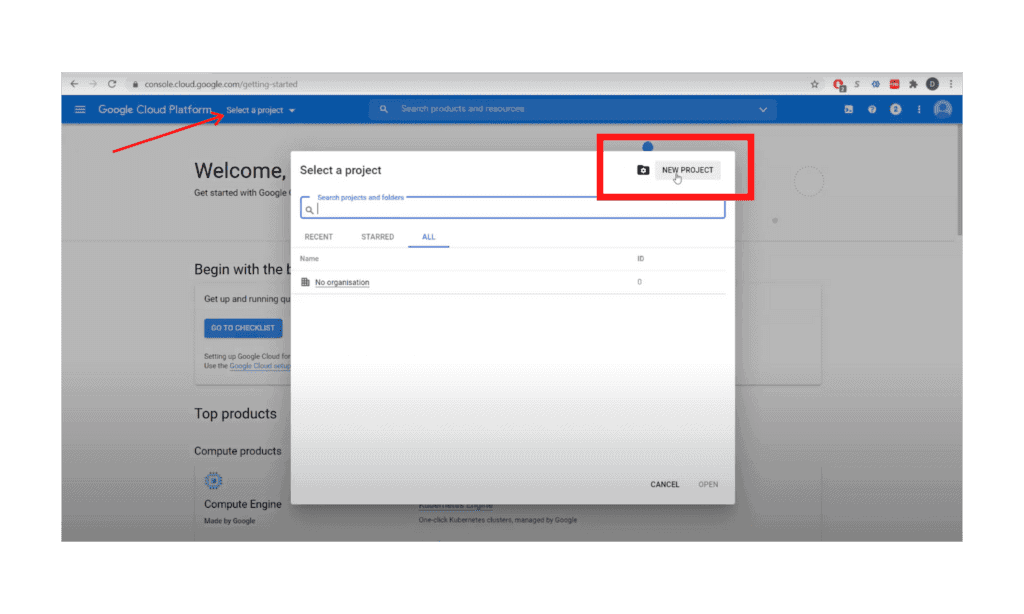
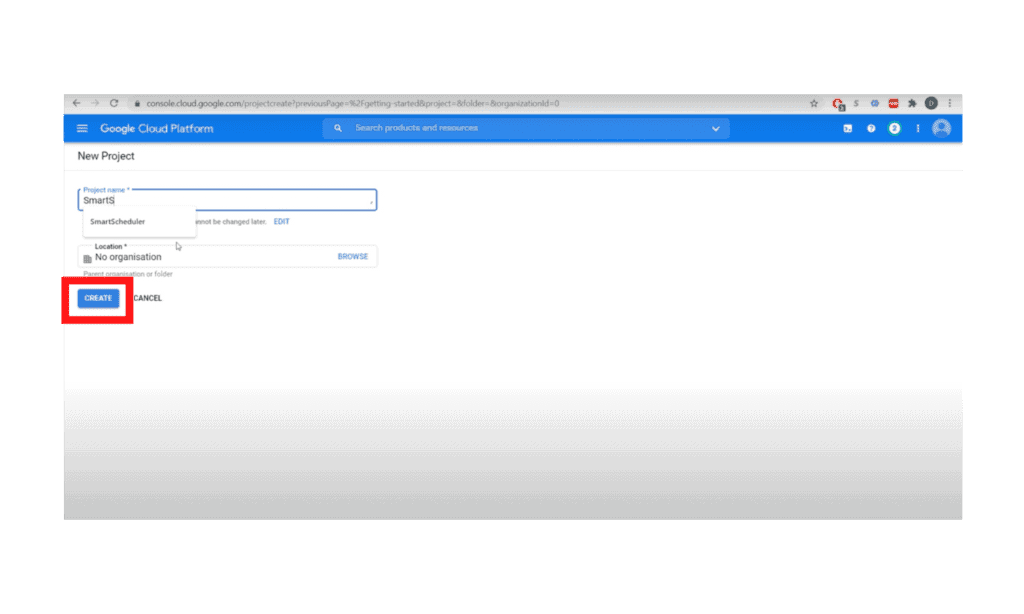
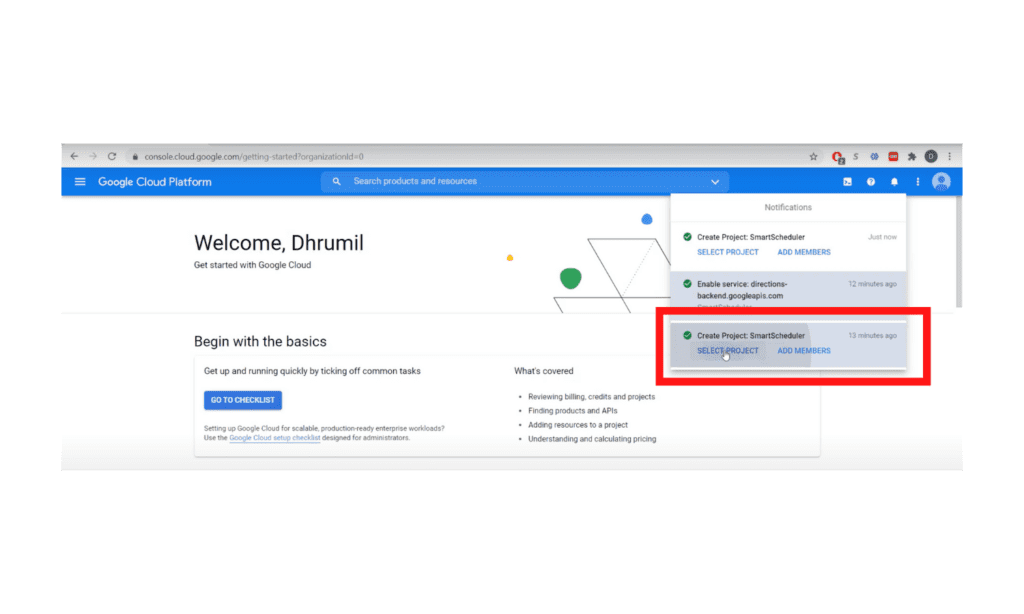
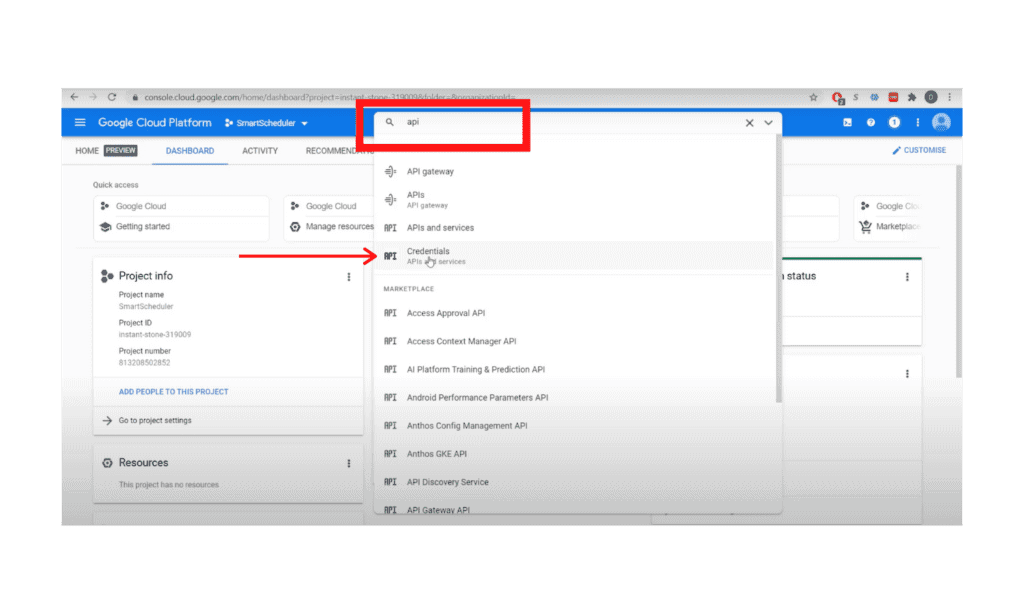
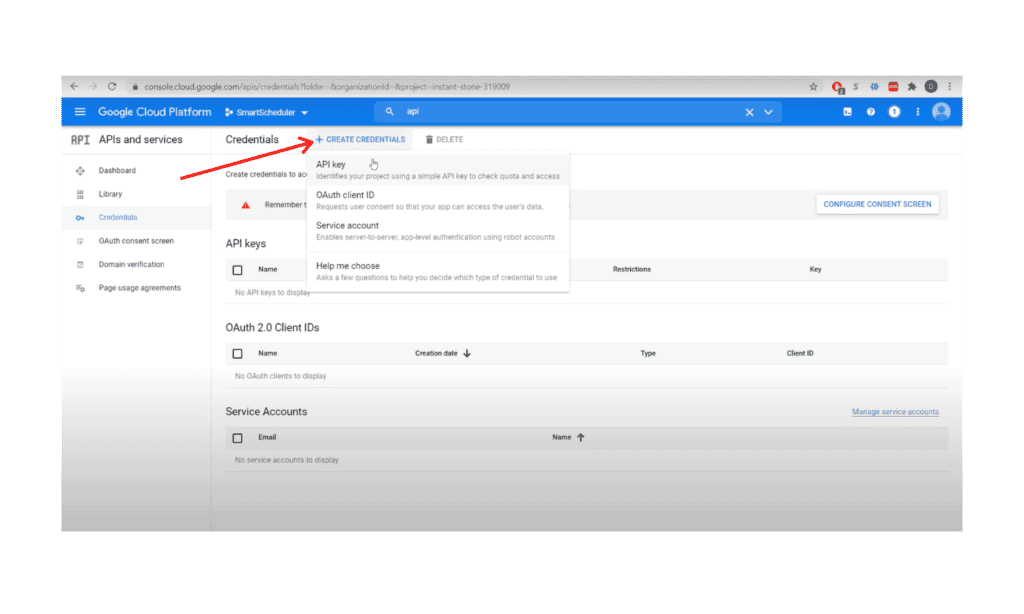
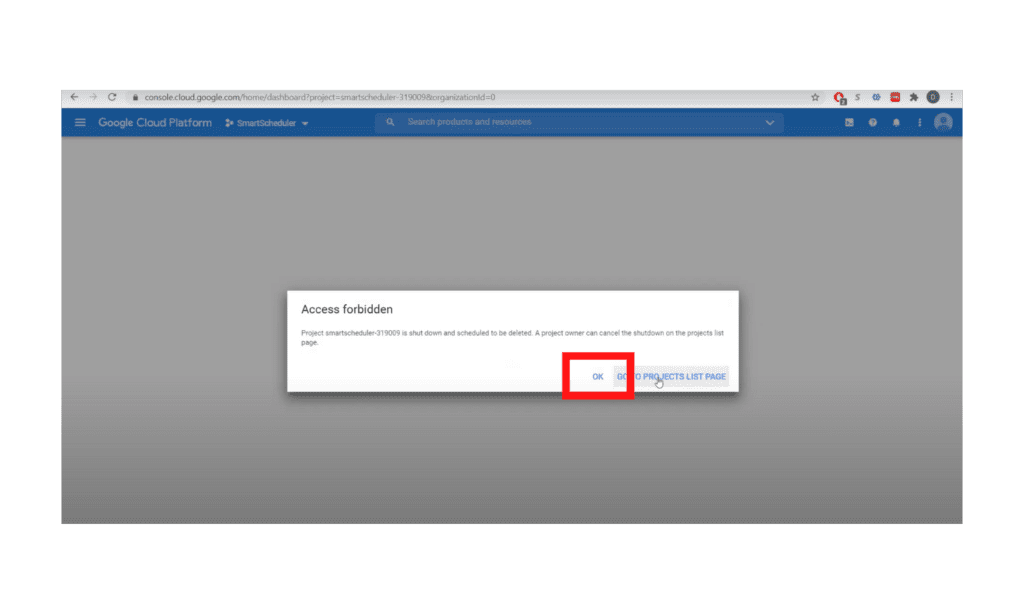
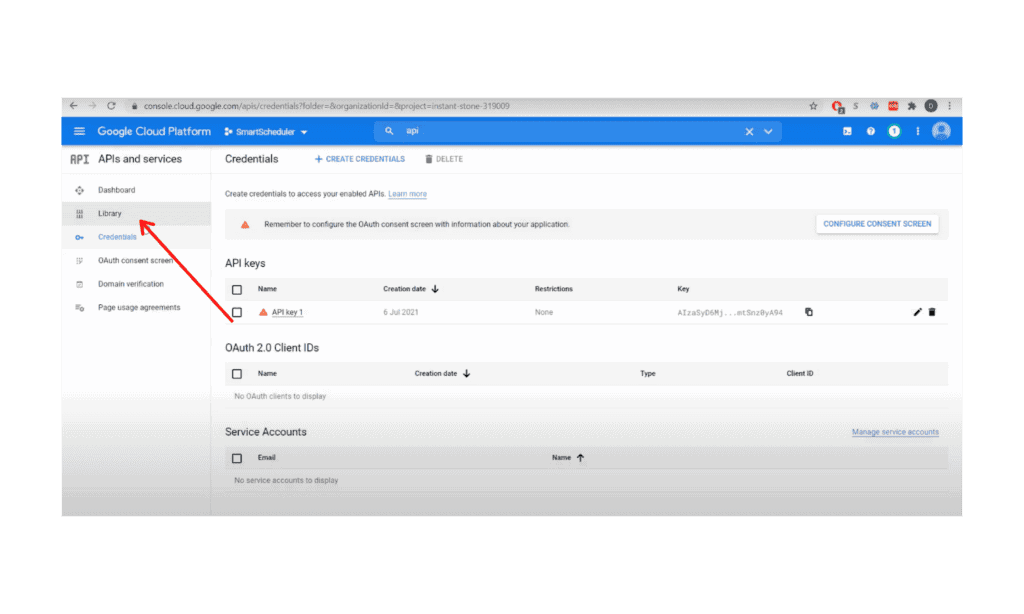
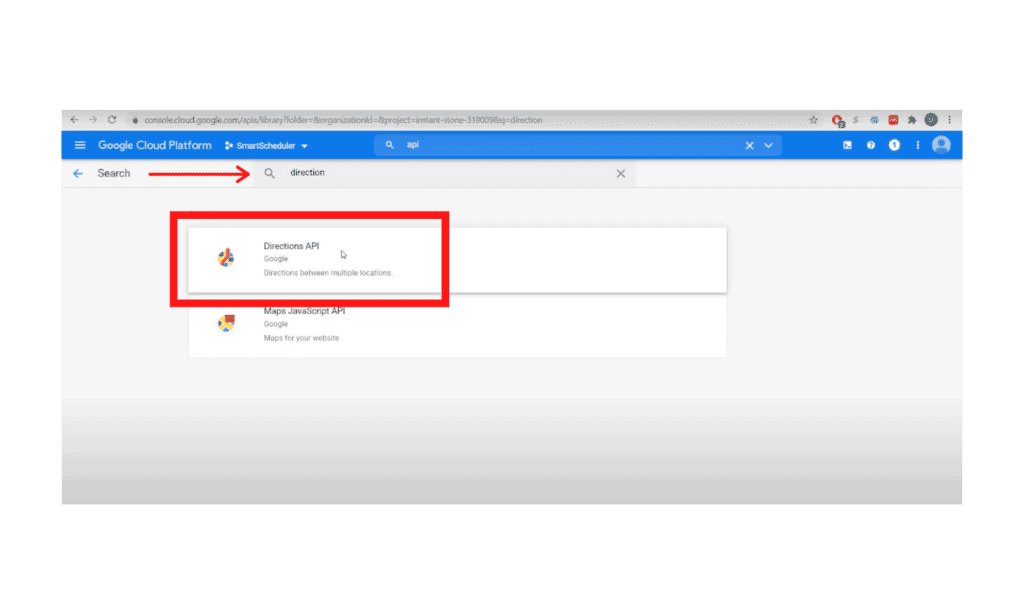
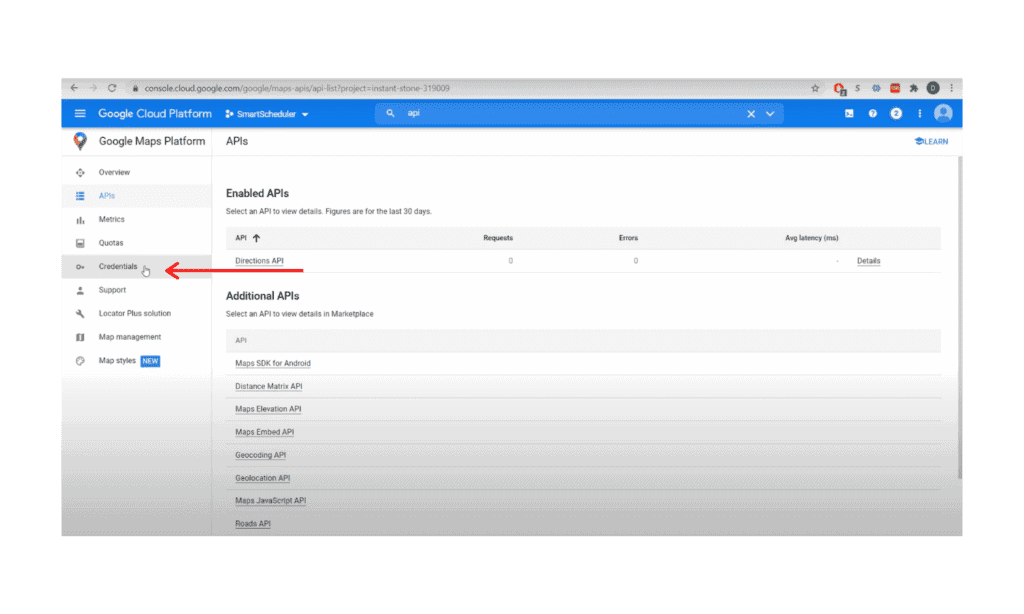
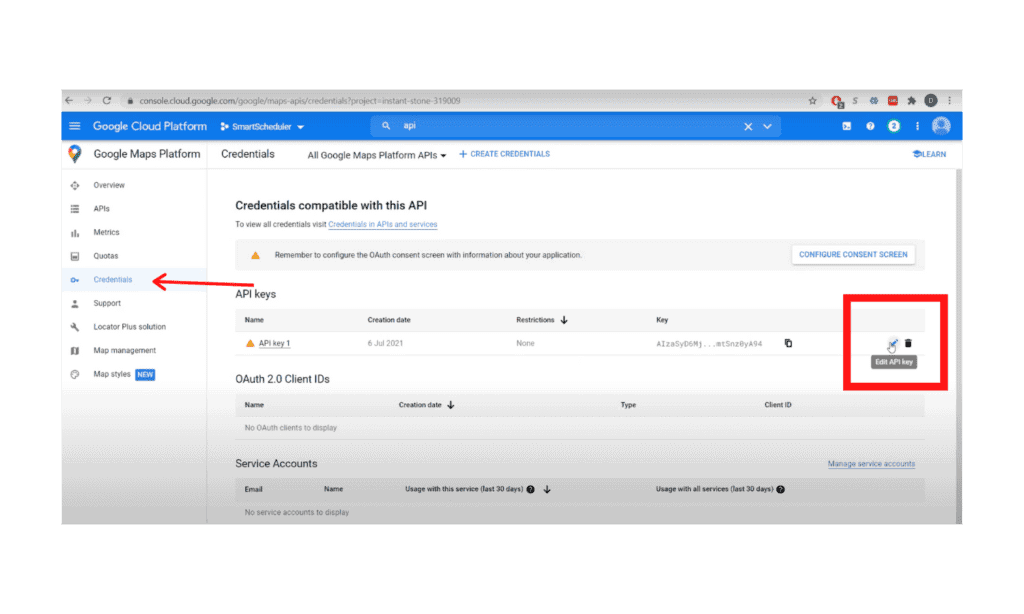
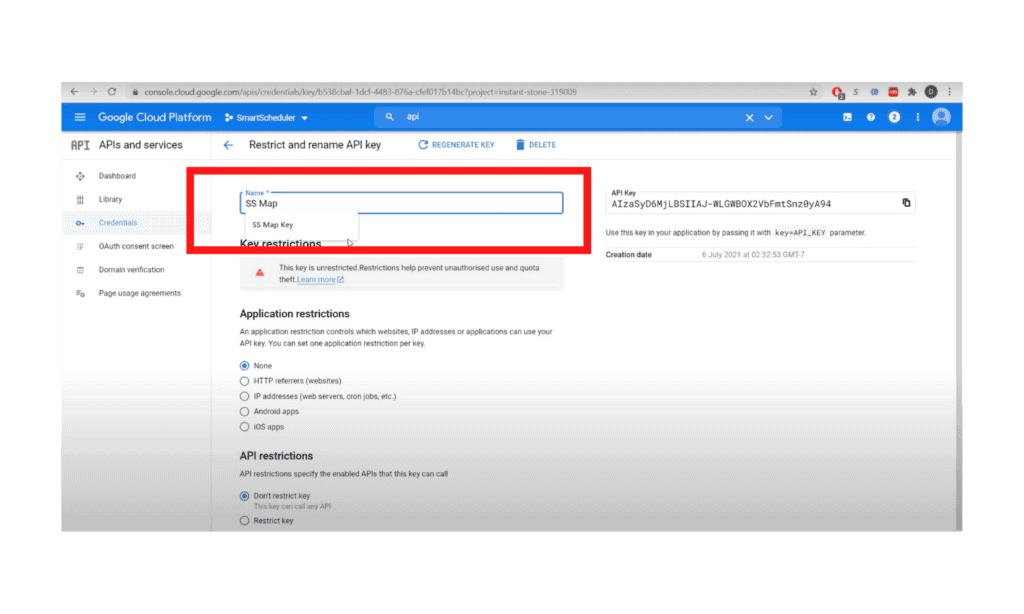
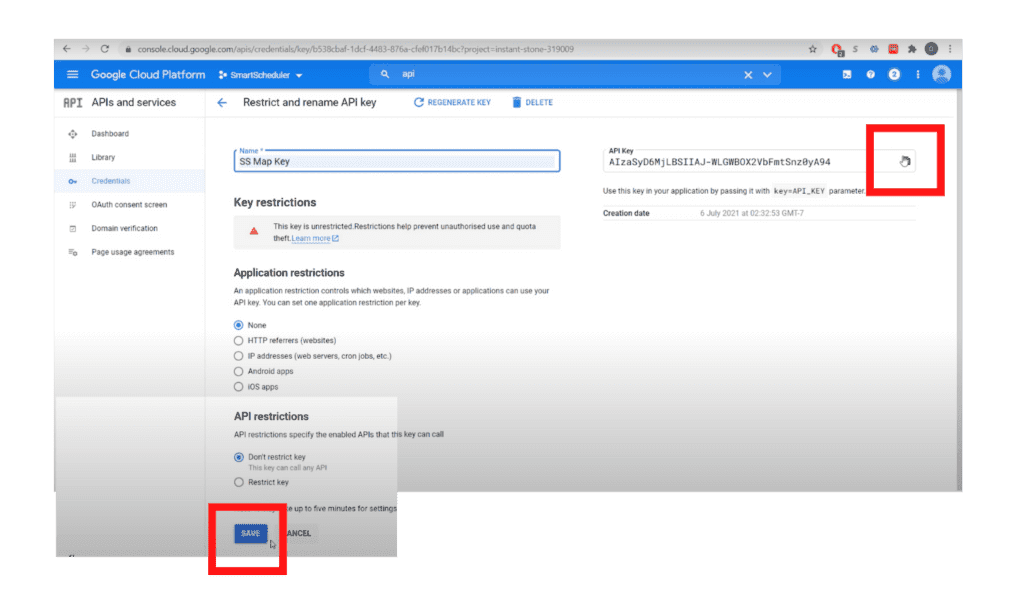

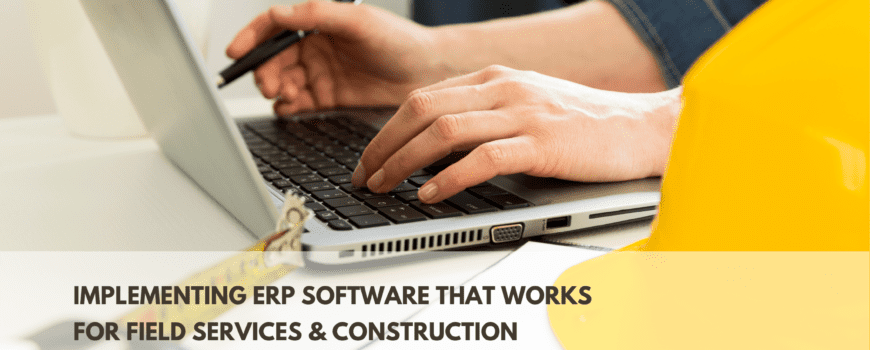



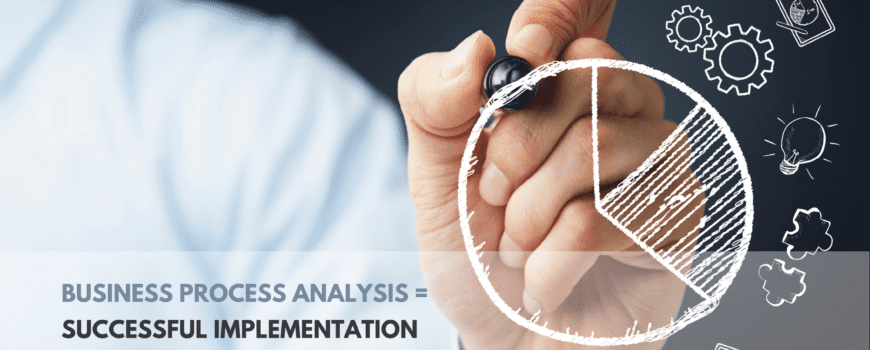

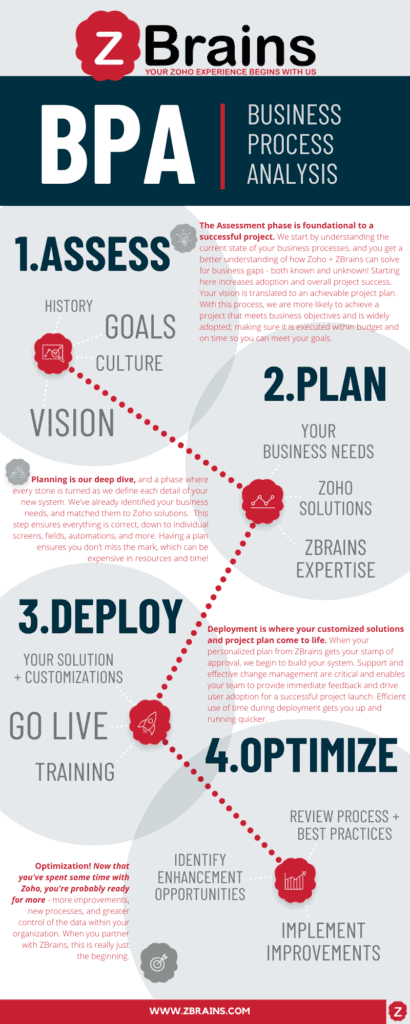
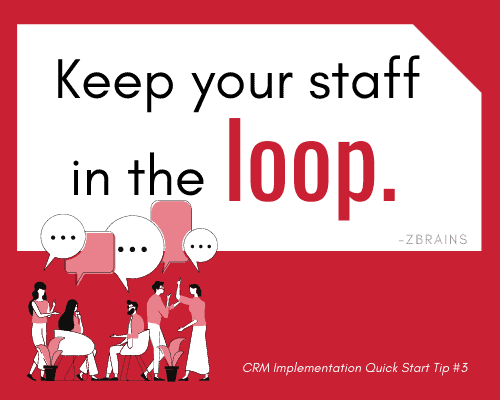 Keep your staff in the loop.
Keep your staff in the loop.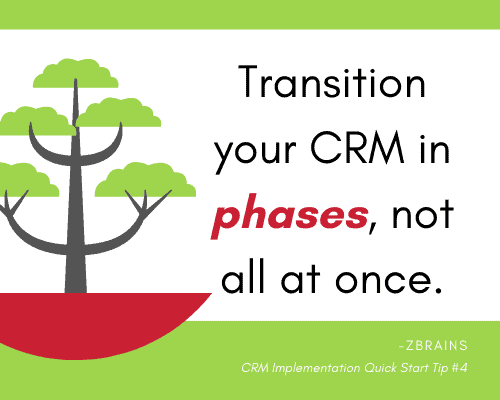 Transition your CRM in phases, not all at once
Transition your CRM in phases, not all at once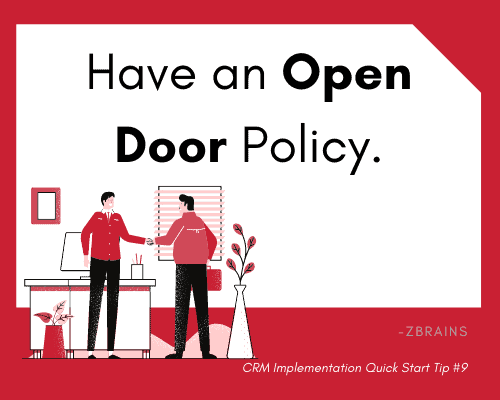 Have a CRM Project Open Door Policy.
Have a CRM Project Open Door Policy.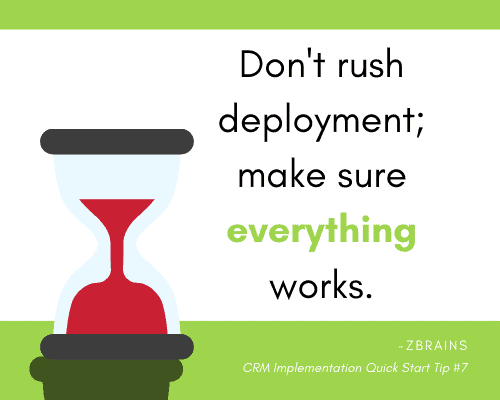
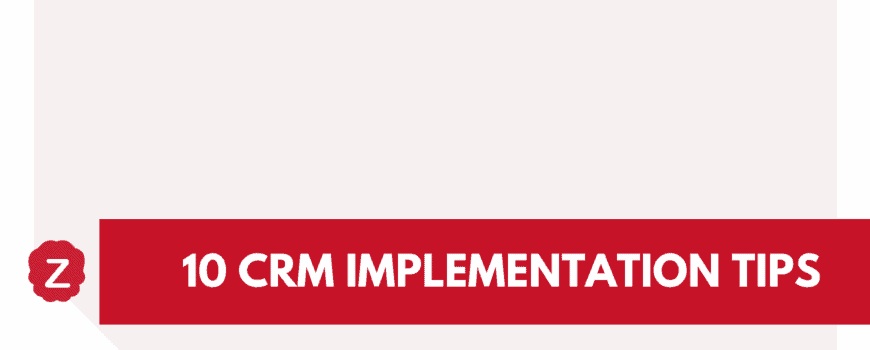
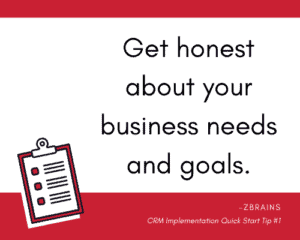 Your CRM should support your sales cycle.
Your CRM should support your sales cycle.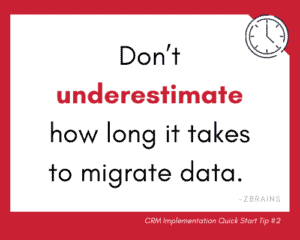 Don’t underestimate data migration time!
Don’t underestimate data migration time!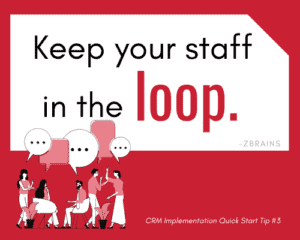 As you plan a CRM implementation, it’s important to know exactly how you’ll be using the modules inside your CRM. Who knows your business systems better than the folks who use them every day? Your expertise and their experience is a recipe for success.
As you plan a CRM implementation, it’s important to know exactly how you’ll be using the modules inside your CRM. Who knows your business systems better than the folks who use them every day? Your expertise and their experience is a recipe for success. 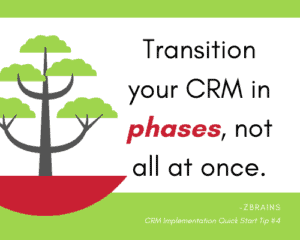 Transition in phases, not all at once.
Transition in phases, not all at once.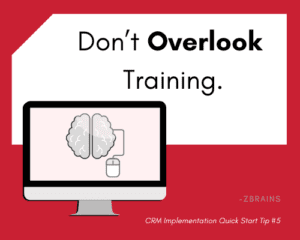 However, before you take off running back to business, it’s time to think about training.
However, before you take off running back to business, it’s time to think about training.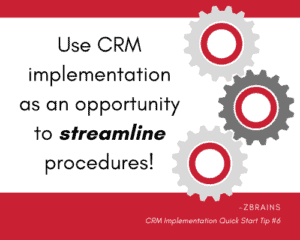 Use your CRM Implementation as an opportunity to streamline your procedures!
Use your CRM Implementation as an opportunity to streamline your procedures!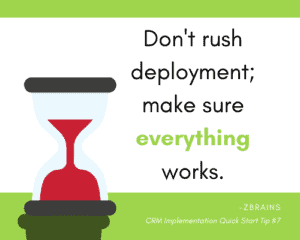 Our best advice is: Don’t rush deployment; make sure everything works like it should.
Our best advice is: Don’t rush deployment; make sure everything works like it should.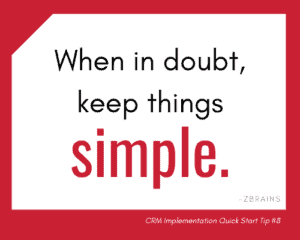 For a process that’s invariably complex, there’s one thing that always holds true:
For a process that’s invariably complex, there’s one thing that always holds true: 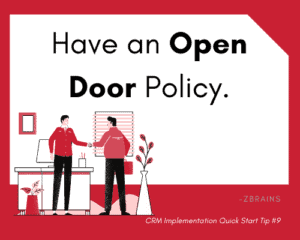 Have a CRM Project Open Door Policy
Have a CRM Project Open Door Policy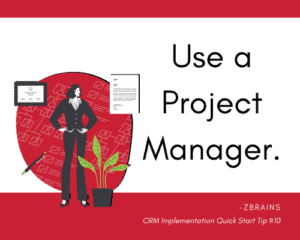 Be Successful the First Time With a Project Manager
Be Successful the First Time With a Project Manager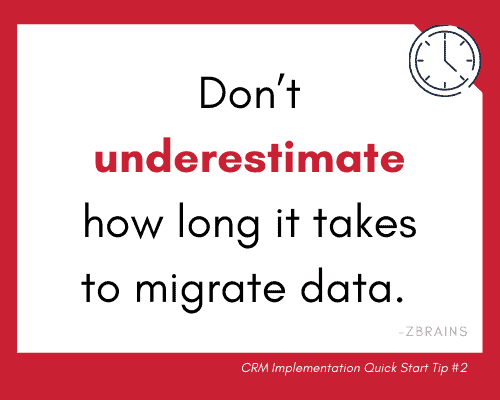 Don’t Underestimate Data Migration Time
Don’t Underestimate Data Migration Time